John Hurrell – 3 July, 2021
Taken from a helicopter, they each contain a tiny image of his naked (then) wife, Carina, usually in the spread-eagled pose popularised by 'Vitruvian Man', Leonardo's famous humanistic diagram, but now seen with changed gender, in industrial or agricultural Taranaki settings. That art historic reference cleverly counteracts any possible tittering…maybe.
Auckland
John Crawford,
Aerial Nudes
15 June - 28 July 2021
In an exhibition positioned on the off-white inner brick walls of Little Rosies café in Parnell, New Plymouth photographer John Crawford (known locally for his distinctive portraits, landscapes and animal works) presents, in assorted sizes and shapes, fifteen coloured images taken in the early eighties—but till now kept from the public eye. Taken from a helicopter, they each contain a tiny image of his naked (then) wife, Carina, usually in the spread-eagled pose popularised by Vitruvian Man, Leonardo’s famous humanistic diagram, but now seen with changed gender, in industrial or agricultural Taranaki settings. That art historic reference cleverly counteracts any possible tittering…maybe.
Made well before digital Photoshopping became available, these ‘nudes’ could be elegantly composed abstractions if the human figure were to be removed, the scale increased, and the acuity improved. However with the remotedly positioned naked woman included, these images, by virtue of their gimmicky cipher, seem like a dubious attempt to bait the country’s sanctimonious media, long jaded by just how predictable international and national art has become over the last five or six years.
In fact it would be better if these distant nudes either disappeared or else became more explicit. Their timid naughtiness makes them irritatingly cute. Being offensively salacious and enlarged would at least give them a ferocious edge and make them free of functional ambiguity: i.e. the purpose of titillation would be made loud and clear. Their attention-seeking sensationalist rationale would be recognisable instantly. And unrepentant.
While the artist is not supplying magnifying glasses, his calling them ‘nudes‘ is meant to imply a natural state (or idealised—as often discussed by Sir Kenneth Clark), not the vulnerability that ‘nakedness’ denotes with being unclothed. This is supported by the artificiality of the attendant ‘masculine’ machinery, stockyards, construction sites, tip trucks, water tanks, railway lines etc. The diminutive uncovered female figure (read ‘sexually available’) is placed within specific cultural settings that contradict the ‘naturalness’ of nudes.
Crawford‘s outdoors environs are hostile and harsh, and perpetuate with the exposed and soft body, assumptions about viewer desire. They were overtly uneasy juxtapositions forty years ago (and wisely not shown): they are even more obviously unfortunate now. Once (if exhibited) they might have been seen as juvenile feminist baiting. Today (as a strategy) they aren’t even that smart. They look dated and just plain silly. The underpinning idea they are based on—that of an idealised female form barely dectable within a ‘manmade’ landscape—is too frivolous. It doesn’t work.
John Hurrell
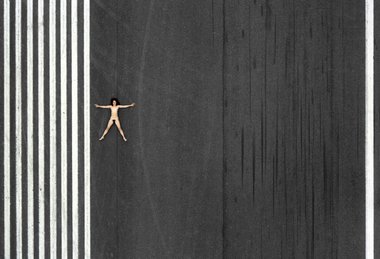
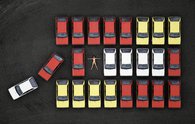
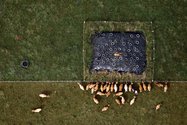
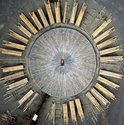
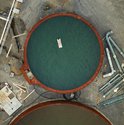







 Two Rooms presents a program of residencies and projects
Two Rooms presents a program of residencies and projects Advertising in this column
Advertising in this column



This Discussion has 0 comments.
Comment
Participate
Register to Participate.
Sign in
Sign in to an existing account.